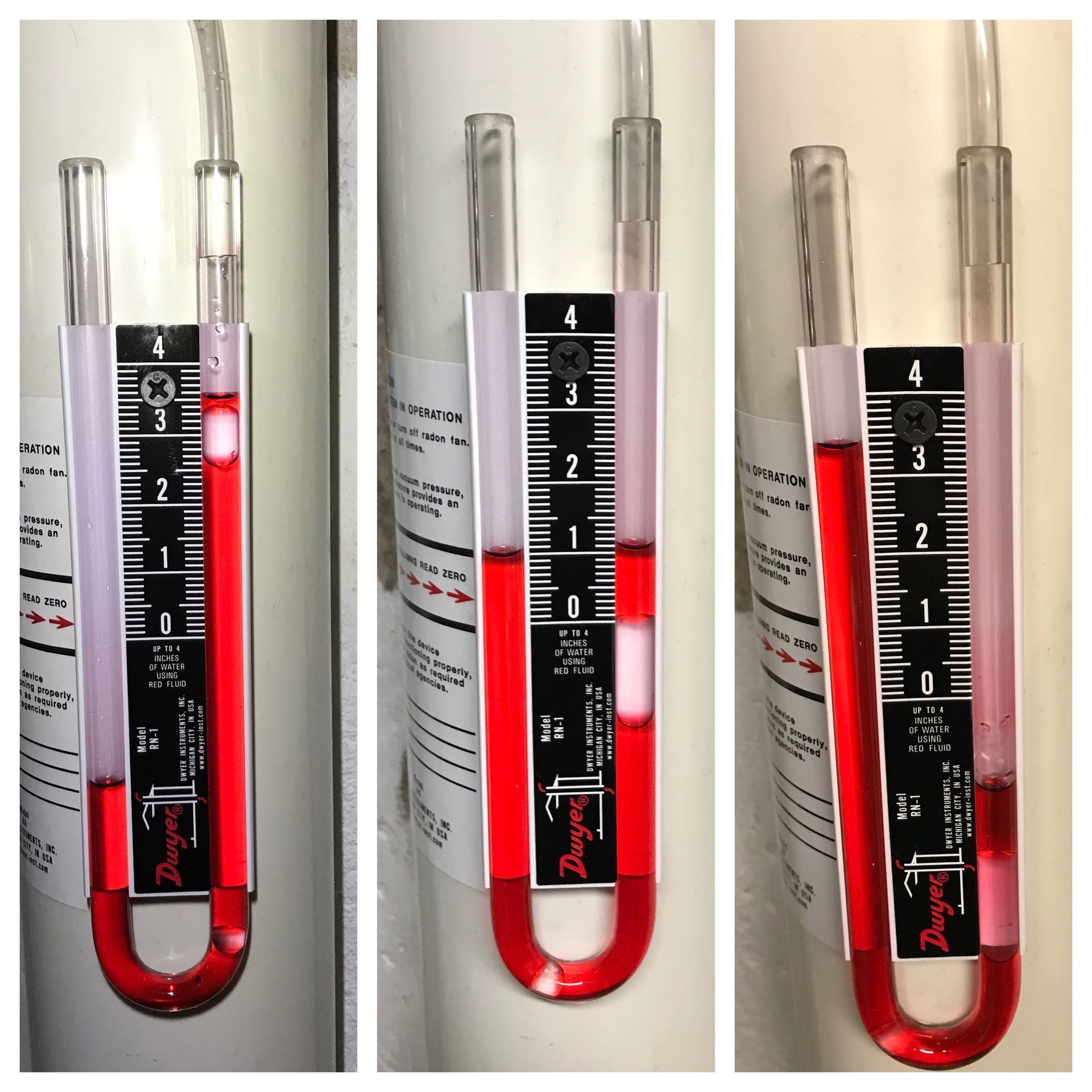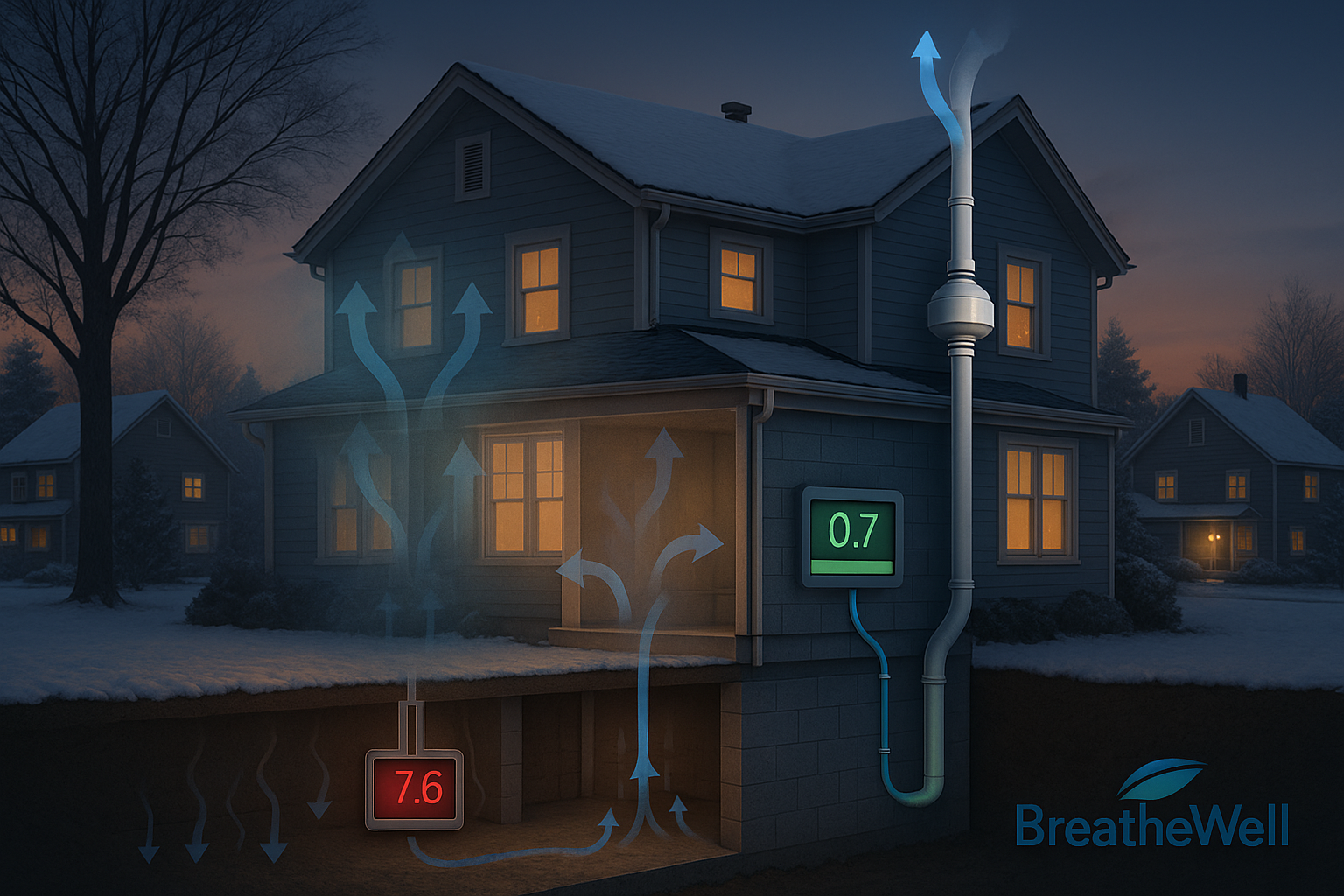How To Read Your Radon System Manometer
If you’ve had a radon mitigation system installed in your St. Paul home, you may have noticed a small U-shaped gauge mounted to the pipe—this is your radon system manometer. It may not look like much, but this device plays an important role in showing whether your mitigation system is running properly.
At BreatheWell Radon Solutions in St. Paul, MN, we often hear from homeowners who are unsure how to read their manometer or when it’s time to call for service. This guide will help you feel confident checking your system and knowing what to do next.

What Is a Radon System Manometer?
A manometer is a simple pressure gauge that measures suction created by your mitigation fan. The fan pulls radon gas from under your foundation and vents it outside before it can enter your living space. The manometer shows the pressure difference in the pipe, which tells you whether the fan is working correctly.
You can think of the manometer as your system’s dashboard light—it’s a quick, visible signal that your system is doing its job to protect your family.
How to Read Your Manometer
Checking your manometer is simple once you know what to look for.
1. Check the Liquid Levels
Inside the U-shaped tube, you’ll see colored liquid. If the fan is running, the two sides will show different levels. Uneven liquid levels mean the fan is operating.
2. Compare to the Normal Range
Most installers mark the manometer with tape or a line showing the normal operating range. If your liquid levels are close to that mark, everything is working as expected.
3. Watch for Problem Signs
- Both sides even at zero – This usually means the fan isn’t running.
- Levels far outside the normal range – Could mean a blockage or pressure issue.
- Sudden, unexplained changes – Even if the fan is on, this may indicate something isn’t right.
When to Call a Radon Professional
While the manometer gives you a quick snapshot, it doesn’t tell the whole story. Call BreatheWell Radon Solutions in St. Paul if you notice:
- The manometer levels are equal, showing no suction.
- The system fan is noisy or vibrating.
- There’s condensation, dripping, or leaks around the pipe or gauge.
- Radon test results are higher than they should be, even with the system running.
Even if your manometer looks normal, it’s important to retest your home every two years to make sure radon levels stay below the EPA’s recommended limit.
Why It Matters
Radon is the second leading cause of lung cancer in the U.S., and Minnesota homes are especially at risk because of local soil and geology. The only reliable way to reduce radon levels is with a properly functioning mitigation system. Checking your manometer regularly gives you peace of mind that your family is protected.
Ready to Protect Your Home?
Your manometer is a quick indicator, but expert testing and service ensure lasting safety. If you’ve seen unusual readings—or if it’s been more than two years since your last radon test—don’t wait.
Contact BreatheWell Radon Solutions in St. Paul, MN today for reliable radon testing, system maintenance, and expert guidance you can trust.
Ready to work with BreatheWell Radon Solutions?
Let's connect! We’re here to help.
Send us a message and we’ll be in touch.
Or give us a call today at (651) 615-7770



